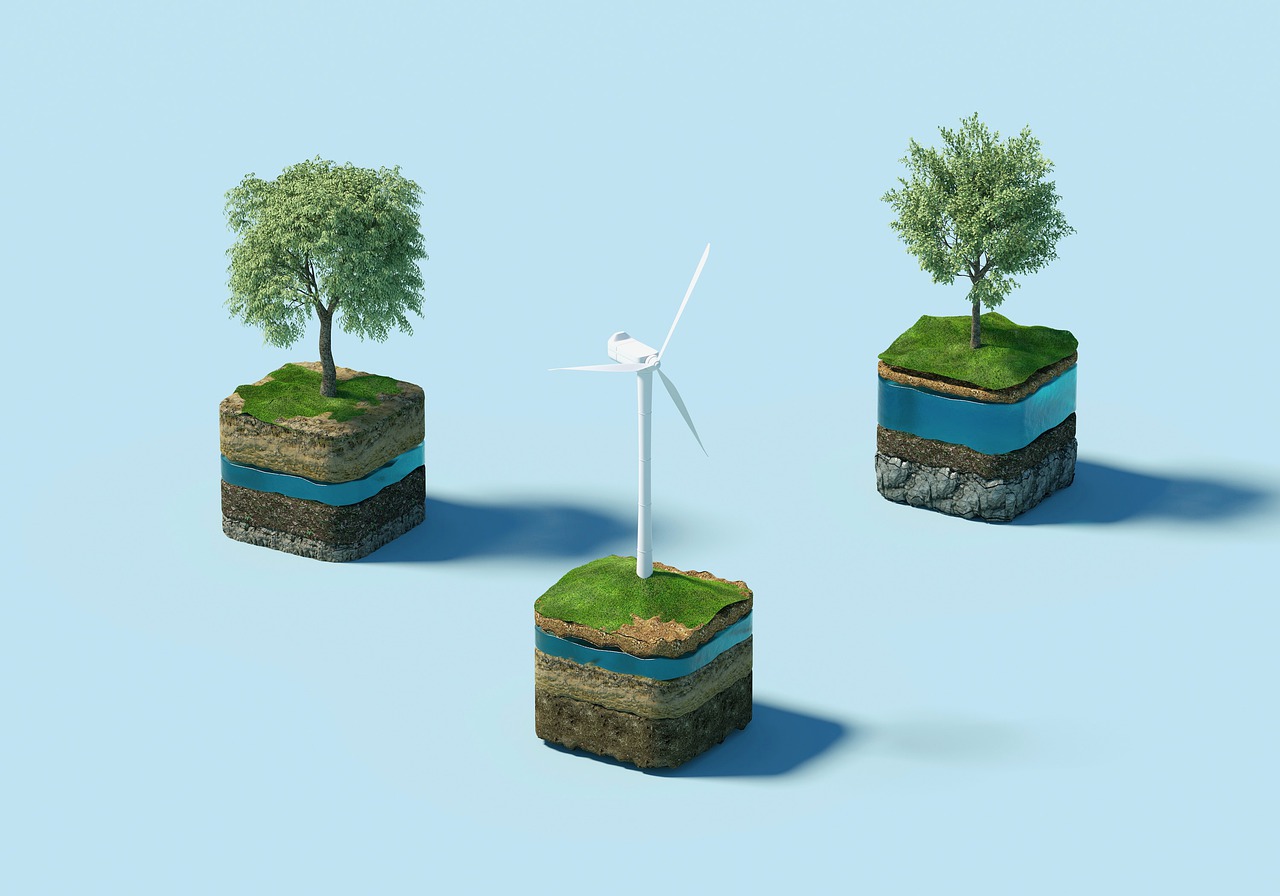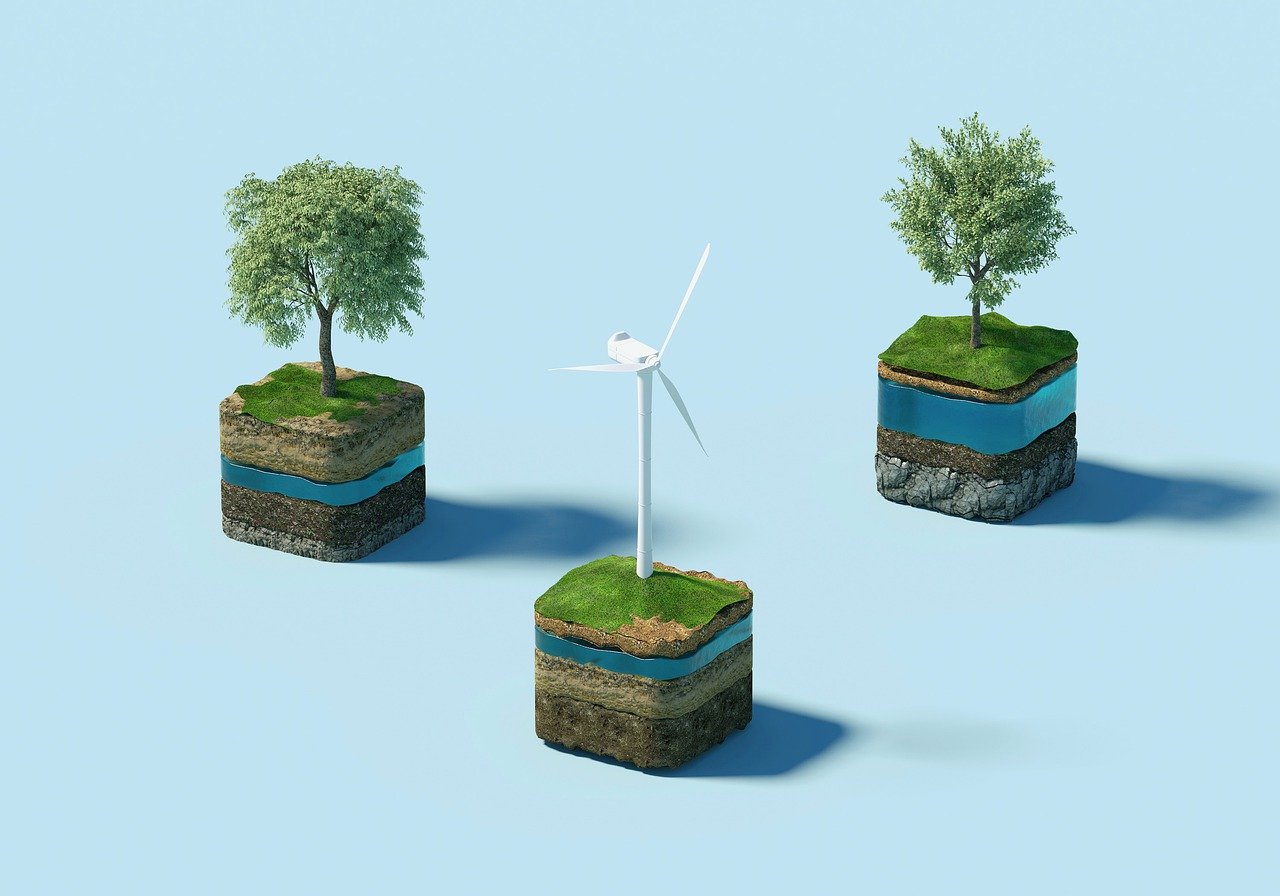In today’s fast-paced world, where the prices of goods seem to be constantly on the rise, it is essential to understand the connection between inflation and sustainable agriculture. At Inflation.Monster, we are passionate about providing you with insights into the intriguing world of inflation and its impact on various aspects of our lives. Join us as we explore the crucial role that sustainable agriculture plays in combating inflation and ensuring a stable economy. By diving deep into this topic, we aim to equip you with the knowledge necessary to navigate the financial landscape and make informed decisions for a sustainable future.

The Basics of Inflation
Definition of inflation
Inflation refers to the sustained increase in the general level of prices for goods and services in an economy over time. It is commonly measured by the Consumer Price Index (CPI), which tracks the changes in prices of a basket of goods and services typically purchased by consumers. When inflation occurs, the purchasing power of money decreases, as it takes more money to buy the same amount of goods and services.
Causes of inflation
Inflation can have various causes, including:
-
Demand-pull inflation: This occurs when the demand for goods and services exceeds the supply, leading to an increase in prices. When consumers have more money to spend, they are willing to pay higher prices for goods and services, which then leads to inflation.
-
Cost-push inflation: This type of inflation happens when the cost of production, such as wages or raw materials, increases. As the cost of inputs rises, businesses pass on these costs to consumers in the form of higher prices, resulting in inflation.
-
Monetary inflation: When there is an excessive increase in the money supply in an economy, it can lead to inflation. This can occur when central banks print more money or engage in expansionary monetary policies, which increase the amount of money circulating in the economy.
Types of inflation
There are different types of inflation that can occur:
-
Moderate inflation: This refers to a gradual and steady increase in prices, typically within a range of 2% to 4% per year. Moderate inflation is generally considered desirable, as it can stimulate economic growth and discourage hoarding of money.
-
Hyperinflation: Hyperinflation is an extremely high and typically accelerating inflation. This type of inflation usually occurs when there is a loss of confidence in the currency, leading to a rapid devaluation. Hyperinflation can have severe economic consequences, such as eroding savings and causing social unrest.
-
Stagflation: Stagflation is a combination of stagnant economic growth and high inflation. It occurs when an economy experiences high unemployment and low output, while prices continue to rise. Stagflation poses significant challenges for policymakers as traditional measures to stimulate economic growth may worsen inflationary pressures.
The Impact of Inflation on Agriculture
Effects of inflation on food prices
Inflation can have a significant impact on food prices, as the agricultural sector is directly affected by changes in input costs, such as fuel, fertilizer, and labor. When inflation occurs, the prices of these inputs rise, which can lead to increased production costs for farmers. In turn, farmers may pass on these higher costs to consumers, resulting in higher food prices. This can disproportionately affect low-income households, who spend a larger portion of their income on food.
Impact of inflation on farmers
Inflation can also have a direct impact on farmers’ livelihoods. As input costs rise, farmers may struggle to afford the necessary resources for cultivation or livestock management. This can lead to decreased agricultural productivity and may force farmers to reduce their operations or exit the industry altogether. Additionally, fluctuations in commodity prices due to inflation can make it challenging for farmers to predict and plan for their income, further exacerbating financial instability.
Challenges faced by the agricultural sector due to inflation
The agricultural sector faces several challenges due to inflation, including:
-
Uncertainty in planning: Inflation can create uncertainty in the agricultural sector, making it difficult for farmers to plan for future investments, expansion, or crop rotations. Fluctuating input costs and volatile commodity prices make it challenging to make informed decisions about resource allocation, which can hamper long-term agricultural sustainability.
-
Increased debt burden: Rising input costs coupled with unstable income streams can lead to increased debt levels for farmers. Borrowing becomes necessary to cover operational expenses and investments, ultimately leading to higher interest payments and financial strain on farmers.
-
Limited access to credit: Inflation can make it harder for farmers to access credit as lending institutions become more cautious about lending to the agricultural sector. This lack of access to financing can constrain farmers’ ability to adopt sustainable agricultural practices or invest in technologies that can enhance productivity.
Introduction to Sustainable Agriculture
Definition of sustainable agriculture
Sustainable agriculture is a system of farming that focuses on long-term environmental, social, and economic sustainability. It involves the use of practices and techniques that minimize negative environmental impacts, conserve natural resources, and promote biodiversity. Sustainable agriculture aims to ensure food production while preserving the quality of ecosystems, supporting rural communities, and maintaining the overall health of the planet.
Benefits of sustainable agriculture
Sustainable agriculture offers numerous benefits, including:
-
Environmental conservation: Sustainable agriculture practices aim to reduce the use of synthetic inputs such as pesticides and fertilizers, minimizing their impact on the environment. By promoting soil health, water conservation, and biodiversity, sustainable agriculture contributes to the preservation of ecosystems and the mitigation of climate change.
-
Resource efficiency: Sustainable agriculture emphasizes the efficient use of resources, including land, water, and energy. Practices like crop rotation, organic fertilization, and integrated pest management help optimize resource utilization, resulting in higher productivity and reduced waste.
-
Economic viability: Sustainable agriculture practices can enhance the economic viability of farmers. By reducing input costs, improving soil fertility, and diversifying crops, farmers can achieve higher yields and improved market opportunities. Additionally, sustainable agriculture fosters local markets and community-supported agriculture, strengthening the connection between producers and consumers.
Sustainable Agriculture as a Tool to Combat Inflation
Reducing dependence on fossil fuels
One way in which sustainable agriculture can combat inflation is by reducing the sector’s dependence on fossil fuels. Traditional agricultural practices, such as large-scale mechanization and heavy use of chemical inputs, rely heavily on fossil fuels for operations. As fuel prices increase due to inflation, these practices become more expensive and less cost-effective for farmers. In contrast, sustainable agriculture promotes the use of renewable energy sources, such as solar power, and emphasizes manual labor and less energy-intensive techniques. By reducing fossil fuel dependence, sustainable agriculture helps farmers mitigate the effects of inflation on production costs.
Promoting efficient and responsible resource use
Sustainable agriculture techniques emphasize the efficient and responsible use of resources, such as water, fertilizers, and pesticides. By adopting practices like precision irrigation, organic fertilization, and integrated pest management, farmers can optimize resource utilization, reduce waste, and lower input costs. This not only helps farmers navigate inflationary pressures but also contributes to the long-term viability of the agricultural sector by ensuring the sustainable use of finite resources.
Enhancing resilience to climate change
Climate change poses significant risks to agricultural production, including increased frequency and intensity of extreme weather events, changes in rainfall patterns, and the spread of pests and diseases. Sustainable agriculture practices, such as agroforestry, conservation tillage, and crop diversification, can enhance the resilience of farming systems to climate change impacts. By adopting these practices, farmers can mitigate the risks associated with climate change and reduce the vulnerability of their crops and livestock. This resilience can help farmers better cope with the uncertainties brought by inflation, as they are better prepared to adapt to changing environmental conditions.

Sustainable Agriculture Techniques to Mitigate Inflation
Crop rotation and diversification
Crop rotation and diversification are key techniques used in sustainable agriculture to mitigate the impact of inflation. Crop rotation involves the systematic and sequential planting of different crops on the same piece of land over multiple seasons. This practice helps to break pest and disease cycles, improve soil fertility, and reduce the need for synthetic inputs like pesticides and fertilizers. Diversification, on the other hand, involves growing multiple types of crops or incorporating livestock into farming systems. By diversifying their operations, farmers can spread their risks and overcome fluctuations in crop prices that may occur due to inflation.
Integrated pest management
Integrated pest management (IPM) is an ecological approach to pest control that minimizes the use of synthetic pesticides while ensuring effective pest management. IPM involves the integration of various pest control strategies, including biological control, use of resistant crop varieties, habitat manipulation, and cultural practices. By implementing IPM techniques, farmers can reduce their reliance on expensive chemical pesticides, which can be affected by inflation-induced price increases. Additionally, IPM promotes biodiversity and ecological balance, leading to healthier and more resilient farming systems.
Water conservation and management
Water is a valuable resource in agriculture, and its availability and cost can be affected by inflation. Sustainable agriculture techniques promote water conservation and efficient water management practices to mitigate the impact of rising input costs on farmers. Practices like precision irrigation, rainwater harvesting, and the use of drought-tolerant crop varieties help farmers optimize water use and reduce wastage. By implementing water-saving techniques, farmers can mitigate the potential financial strain caused by inflation-driven increases in water prices.
Promoting Sustainable Agriculture Policies
Government subsidies and incentives
Governments can play a crucial role in promoting sustainable agriculture by providing subsidies and incentives to farmers. These financial incentives can help offset the costs associated with implementing sustainable practices. For example, governments can provide subsidies for the purchase of renewable energy systems, offer grants for organic certification, or provide tax incentives for the adoption of sustainable farming techniques. By making sustainable practices more affordable, governments can encourage farmers to invest in sustainable agriculture and mitigate the impacts of inflation.
Support for organic farming practices
Organic farming is a key component of sustainable agriculture, as it promotes the use of natural inputs and prohibits the use of synthetic chemicals. Governments can support organic farming practices by offering technical assistance, training programs, and certification support to farmers. By encouraging the adoption of organic practices, governments can help farmers reduce their reliance on costly inputs like chemical fertilizers and pesticides, thereby reducing the impact of inflation on production costs.
Investment in agricultural research and development
Investment in agricultural research and development (R&D) is essential for promoting sustainable agriculture and addressing the challenges posed by inflation. Governments can allocate funds for agricultural R&D, focusing on developing and disseminating innovative and sustainable technologies and practices. This can include research on climate-resilient crop varieties, agroecology, soil conservation, and precision agriculture. By investing in R&D, governments can provide farmers with the tools and knowledge needed to adapt to inflationary pressures and improve their productivity and profitability.

Implementing Sustainable Farming Practices
Educating farmers about sustainable techniques
One of the key challenges in the adoption of sustainable agriculture practices is the lack of knowledge and awareness among farmers. Educating farmers about sustainable techniques and their benefits is crucial for promoting their adoption. Governments, agricultural extension services, and non-profit organizations can play a role in providing training programs, workshops, and educational resources to farmers. By equipping farmers with the knowledge and skills to implement sustainable practices, they can better navigate the challenges of inflation and improve their long-term agricultural sustainability.
Access to financing for sustainable initiatives
Access to finance is crucial for farmers looking to adopt sustainable initiatives. Lending institutions, governments, and development organizations can introduce financing schemes specifically tailored to support sustainable agriculture. These schemes can offer low-interest loans, grants, or subsidies to farmers who wish to invest in sustainable practices. By providing accessible and affordable financing options, farmers can overcome financial barriers and implement sustainable initiatives that can mitigate the impact of inflation.
Building partnerships and collaborations in the agricultural sector
Collaboration and partnerships within the agricultural sector are vital for promoting sustainable practices and combating inflation. Farmers, industry stakeholders, research institutions, and government agencies can work together to share knowledge, resources, and best practices. This collaboration can involve the creation of farmer networks, establishing research and development partnerships, and facilitating knowledge transfer through workshops and conferences. By strengthening collaboration, stakeholders can collectively address the challenges posed by inflation and develop innovative solutions that support sustainable agriculture.
Case Studies on Sustainable Agriculture Success
Successful implementations of sustainable farming techniques
Numerous case studies showcase the success of sustainable agriculture practices in mitigating the impact of inflation. For example, in Brazil, the adoption of conservation agriculture techniques, including minimal tillage, crop rotation, and cover cropping, has improved soil health, increased yields, and reduced production costs for farmers. Similarly, in India, the System of Rice Intensification (SRI) has helped farmers reduce water usage and pesticide applications, leading to increased rice yields and improved profitability.
Positive outcomes for farmers and the environment
The adoption of sustainable agriculture practices has shown positive outcomes for both farmers and the environment. For instance, in the United States, farmers who have transitioned to organic farming report improved soil quality, reduced input costs, and increased market opportunities for their organic products. Additionally, sustainable agriculture practices that promote agroforestry and conservation tillage have been found to enhance carbon sequestration, biodiversity, and water quality, contributing to environmental sustainability.
Challenges in Adopting Sustainable Agriculture
Costs and financial barriers
One of the main challenges in adopting sustainable agriculture practices is the upfront costs involved. Implementation of sustainable techniques often requires investments in infrastructure, equipment, and training. These initial costs can be a significant barrier, especially for small-scale farmers who may lack the necessary financial resources. Additionally, inflation can further exacerbate these financial barriers by increasing the costs of inputs and equipment needed for sustainable farming practices.
Lack of knowledge and awareness
Another challenge in the adoption of sustainable agriculture is the lack of knowledge and awareness among farmers. Many farmers may not be familiar with sustainable practices or may be resistant to change due to traditional farming practices passed down through generations. Providing farmers with access to training, education, and technical support is crucial for overcoming this challenge and promoting the adoption of sustainable techniques.
Resistance to change in traditional farming practices
Resistance to change in traditional farming practices can be a significant barrier to the adoption of sustainable agriculture. Many farmers may be hesitant to switch from conventional methods that they are familiar with and have been using for years. Overcoming this resistance requires not only education and training but also demonstrating the economic and environmental benefits of sustainable agriculture. By showcasing successful case studies and offering support during the transition period, farmers can be encouraged to embrace sustainable practices.
The Future of Sustainable Agriculture
Technological advancements in sustainable farming
The future of sustainable agriculture lies in the adoption of technological advancements that enhance productivity, resource efficiency, and environmental sustainability. Precision agriculture, for example, utilizes satellite imagery, drones, and sensor technologies to optimize resource use and minimize environmental impact. Advances in genetic engineering and biotechnology can also lead to the development of climate-resilient crops that require fewer resources and can withstand the challenges posed by inflation and climate change.
The role of education and research in driving sustainable practices
Education and research will continue to play a crucial role in driving sustainable agricultural practices. By investing in agricultural education at all levels, from primary schools to universities, individuals can be equipped with the knowledge and skills to adopt sustainable techniques. Additionally, ongoing research and development efforts can provide farmers with innovative solutions to address the challenges posed by inflation and promote the long-term sustainability of the agricultural sector.
Policy changes and global commitments to support sustainable agriculture
Policy changes and global commitments are essential for supporting and promoting sustainable agriculture. Governments can introduce policies that incentivize the adoption of sustainable practices, such as tax breaks for organic farmers or regulations that promote responsible resource use. International agreements, like the United Nations’ Sustainable Development Goals, also provide a framework for global collaboration and commitment towards sustainable agriculture. By aligning policies and commitments, stakeholders can collectively work towards a more sustainable and resilient agricultural future.
In conclusion, inflation poses significant challenges for the agricultural sector, impacting food prices, farmers, and overall agricultural sustainability. However, sustainable agriculture offers a solution to mitigate the impact of inflation. By reducing dependence on fossil fuels, promoting efficient resource use, and enhancing resilience to climate change, sustainable agriculture can help farmers navigate the challenges of inflation while preserving the environment and ensuring long-term food security. Policymakers, farmers, and the agricultural community must collaborate and invest in education, research, and financial support to promote and implement sustainable agriculture practices and build a more resilient and sustainable future for agriculture.




